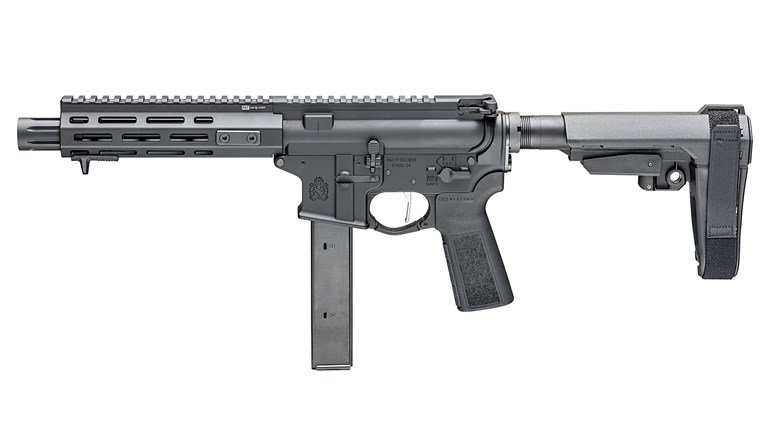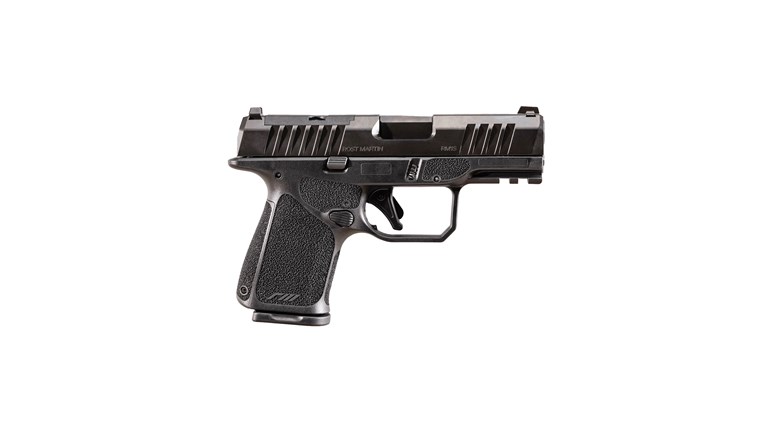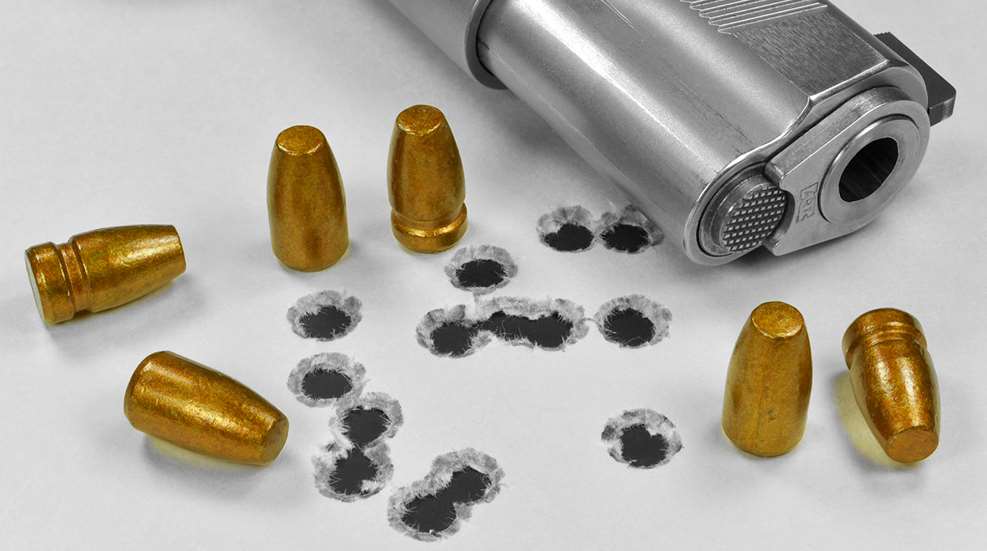
WARNING: All technical data in this publication, especially for handloading, reflect the limited experience of individuals using specific tools, products, equipment and components under specific conditions and circumstances not necessarily reported in the article and over which the National Rifle Association (NRA) has no control. The data has not otherwise been tested or verified by the NRA. The NRA, its agents, officers and employees accept no responsibility for the results obtained by persons using such data and disclaim all liability for any consequential injuries or damages.
The popularity of coated cast lead bullets has spawned a change in bullet designs available to reloaders. Since the bullets no longer need a groove, or grooves, to hold the lubricant, bullets without the lube groove are shooting onto the scene. In a few instances, the designs with lube grooves have disappeared from bullet makers’ offerings.
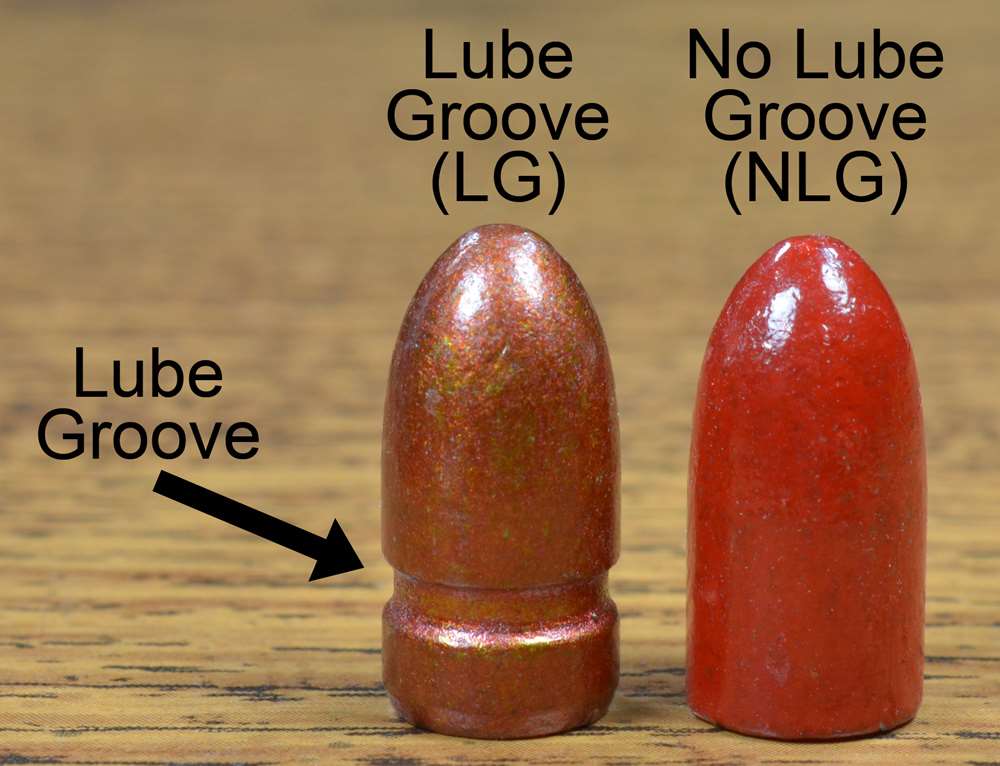
The presumed benefit of NLG bullets is their reduced length and increased bearing surface. All else being equal (i.e. the nose is identical), NLG bullets will be a little shorter than the lube groove (LG) design. Since the LG is now filled in with lead, it is like taking a little lead off the bottom to fill in the groove. A shorter bullet means that it takes up less space in the case which reduces pressure a bit. It’s not a huge difference, and it might or might not show up at the chronograph where the NLG bullets are a few fps slower than the LG bullets of the same design.
The other benefit of NLG bullets is an increase in bearing surface between the bullet and the barrel. The groove is now filled in with lead, and even though you’re taking a little off the bottom of the bullet, it will still translate into more surface area on the bullet’s shank. The presumed benefit of this is greater accuracy. More bearing surface means the bullet gets a ‘better grip’ on the riflings, which aids stability.
At least on the surface, it looks like NLG bullets could have the edge on accuracy. I put them to the test. I compared LG and NLG bullets made by the same manufacturer to see if the NLG bullets were more accurate. SNS casting still had both designs of the same weight for several calibers. I compared 125-grain and 147-grain bullets in the 9mm Luger, 180-grain bullets in the .40 S&W and 200- and 230-grain bullets in the .45 Automatic.
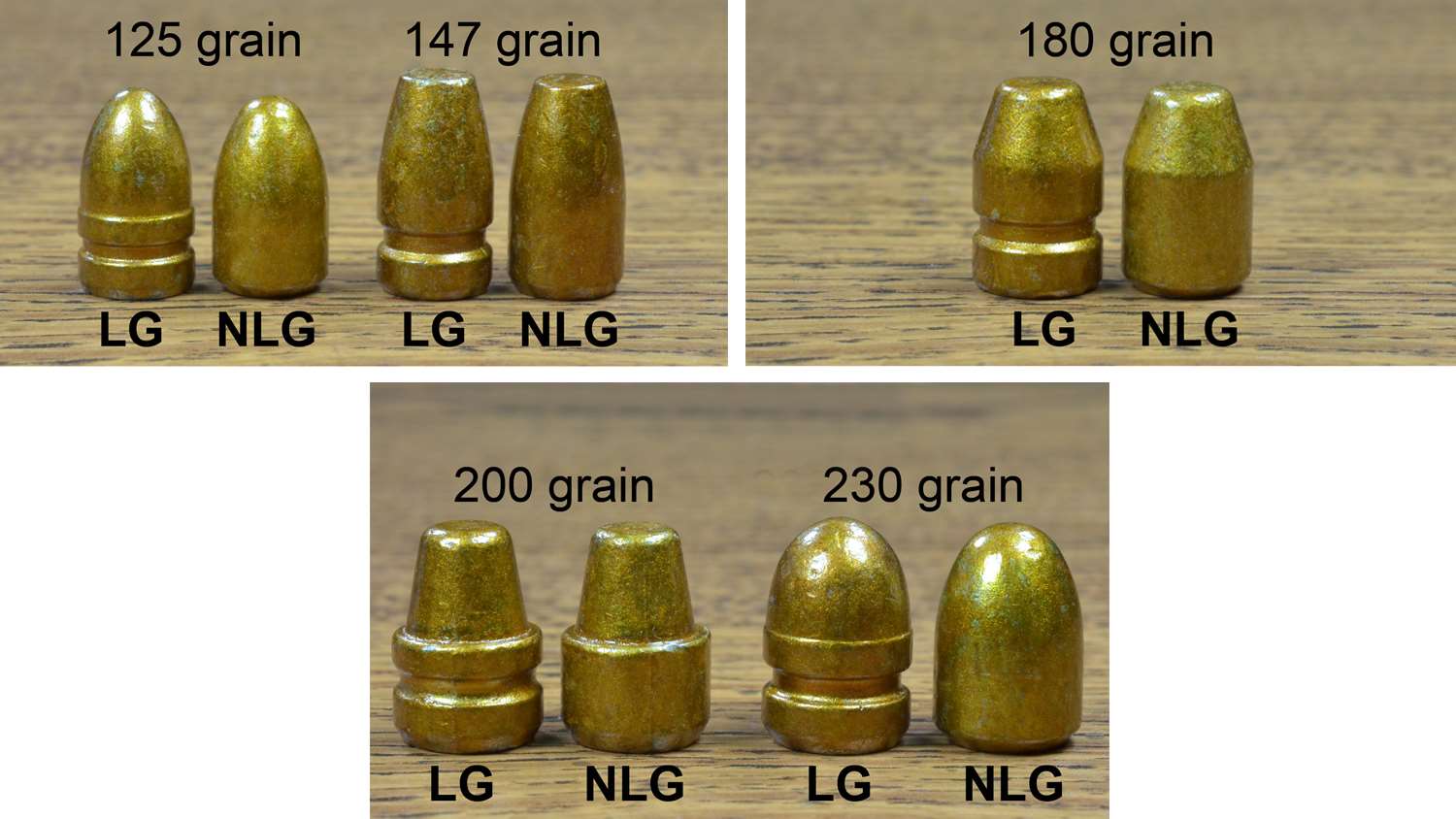
Not all of the two styles of bullets were identical in shape, with the exception of the lube groove, so it is not always a simple apples with LG and apples without LG comparison. The bullets with a clear design difference are the 125-grain 9mm bullets and the 230-grain .45 bullets.
The test guns were a Para Ordnance 9mm pistol with a 5-inch Kart barrel, a Para Ordnance .40 Smith & Wesson pistol with a 5-inch Ed Brown barrel and a Caspian 1911 .45 Automatic pistol with a 5-inch Kart barrel. I fired a 15-shot group at 25 yards with the guns mounted in a Ransom Rest. Velocity was recorded with a Shooting Chrony chronograph at about 10 feet, and is the average of 15 rounds.
9mm
The NLG 125-grain 9mm bullets produced larger groups than the LG bullets with all five gunpowders tested. The groups with the NLG bullets averaged 1.3 inches larger. My barrel simply did not like the NLG 125-grain bullet with any of the powders tested.
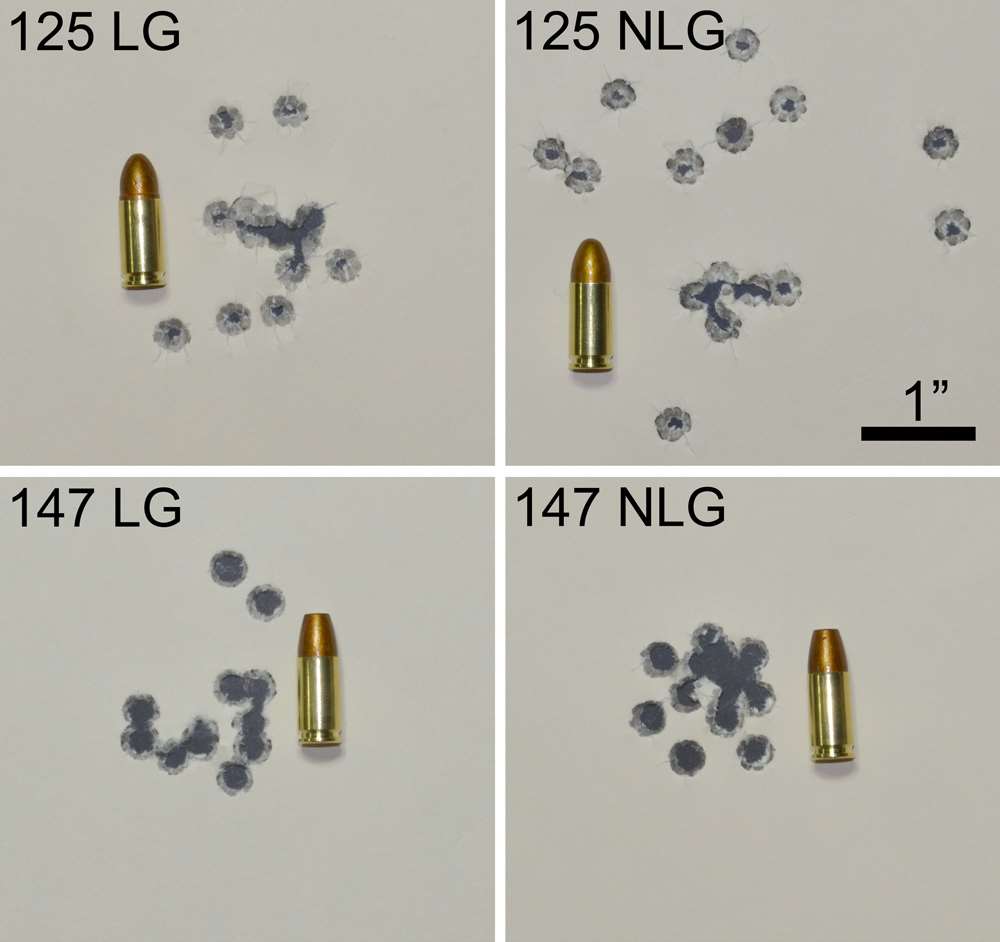
On the other hand, the accuracy of the 147-grain LG and NLG bullets was about the same. The LG bullets produced smaller groups with three powders, but the overall average group size of the LG bullets was only 0.1-inch smaller than the NLG bullets. One group of each of the two bullets was significantly enlarged by a single flier; the remaining 14 rounds were in a group about half the size. But overall, neither bullet type had obviously better accuracy than the other. That said, the 147-grain NLG bullet driven by Power Pistol produced an impressive 15-shot group of only 1.2-inches.
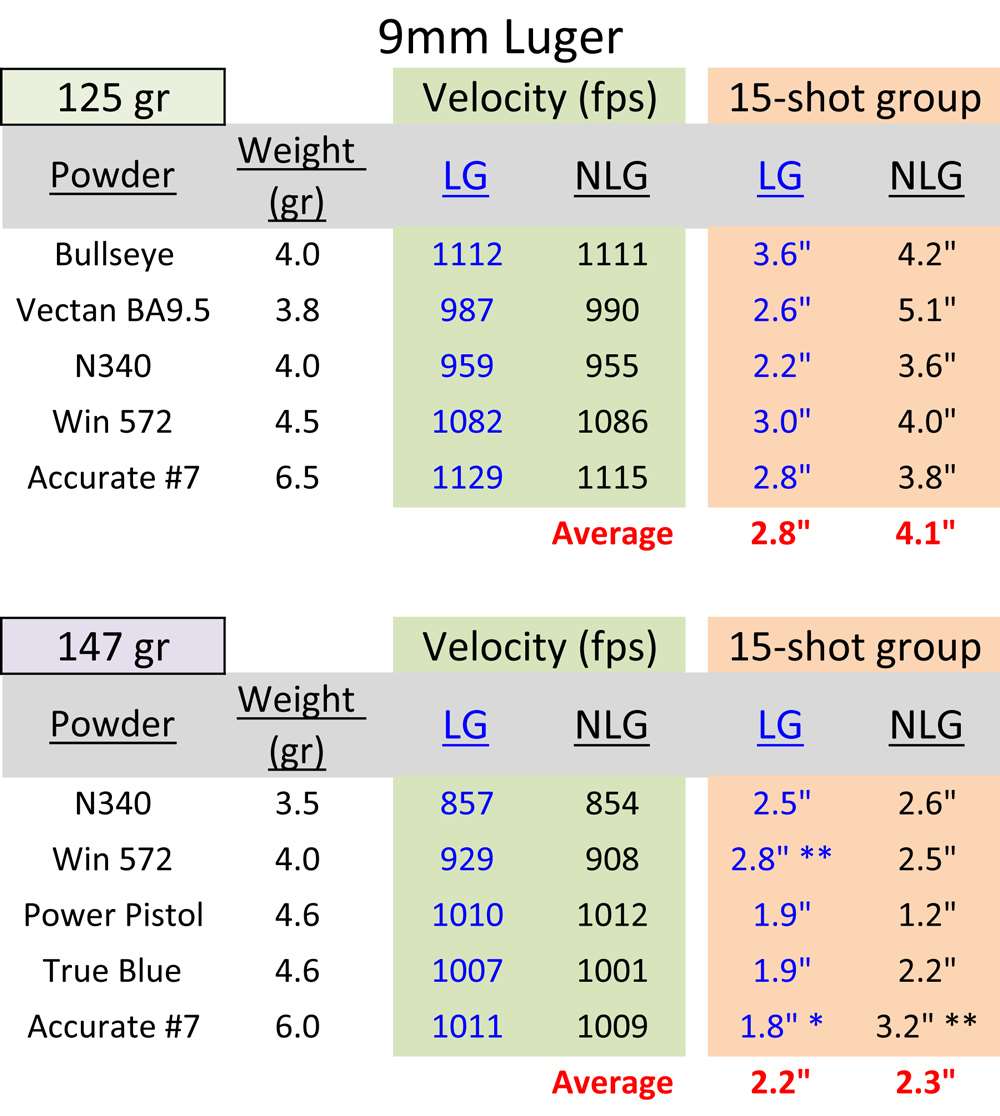
It’s worth pointing out that Lyman’s 49th Edition Reloading Handbook notes that the most accurate powder they tested with their 120-grain cast bullets in the 9mm Luger was N340. I found the same with both designs of the SNS 125-grain round nose bullets. Also, they noted that Power Pistol was the most accurate powder they tested with their 147-grain cast bullet. It produced the smallest of my groups, and True Blue performed nicely as well.
.40 S&W
The Ed Brown .40 S&W barrel did not show an obvious preference for either bullet design. The average group size with the LG bullets (3.7-inches) was nearly the same as with the NLG bullets (3.6-inches). Three gunpowders produced smaller groups with the NLG bullet, but two of those, BE-86 and N320, were just 0.2- and 0.3-inch smaller, respectively. That’s not much.
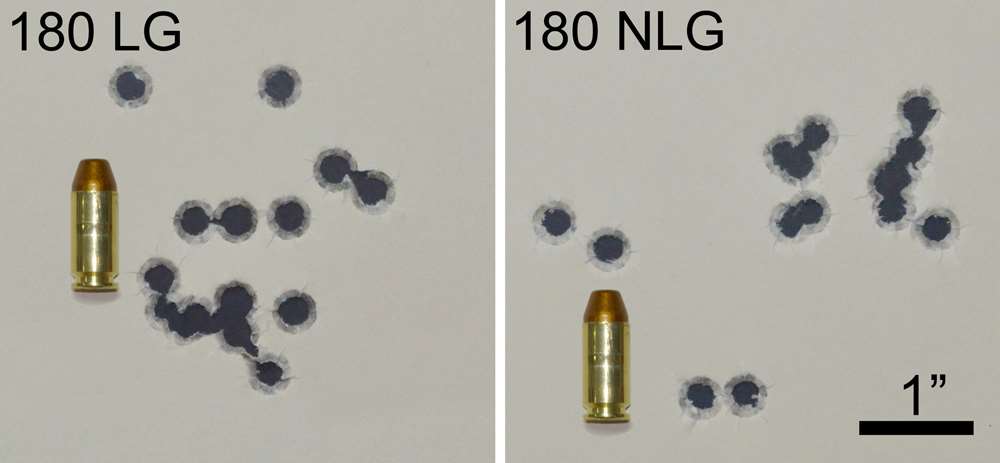
WST’s group was 0.6-inch smaller with the NLG bullets, but Accurate #7’s group was 0.7-inch smaller with the LG bullets and produced the smallest group in this caliber. So, there was no clear preference with the 180-grain bullets in this comparison.
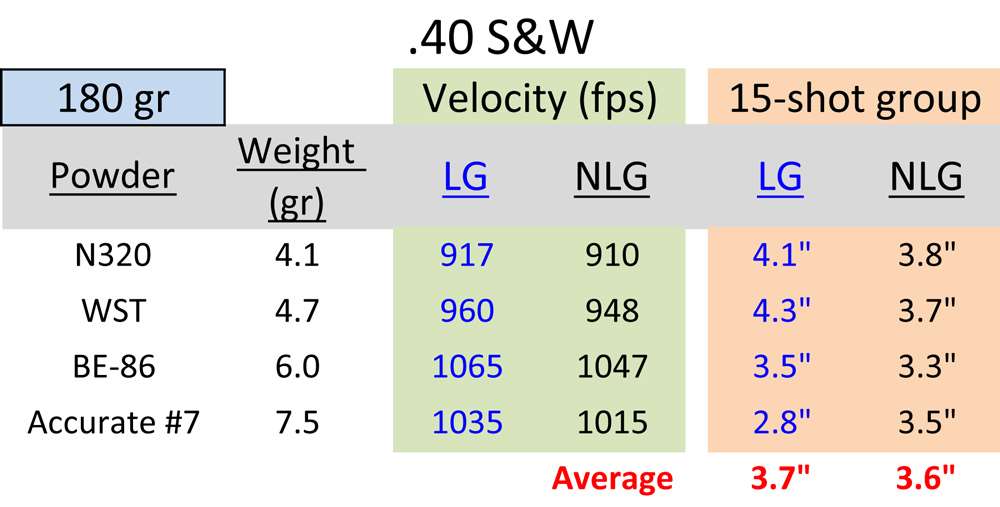
.45 Auto
There was a slight tendency for the LG 200-grain SWC bullets to produce smaller groups than the NLG bullets. Three of the gunpowders tested had smaller groups, and the average group size with the LG bullets was 0.3-inch smaller than the NLG bullets. The load that produced the best groups with both bullets was 4.2 grains of Bullseye.
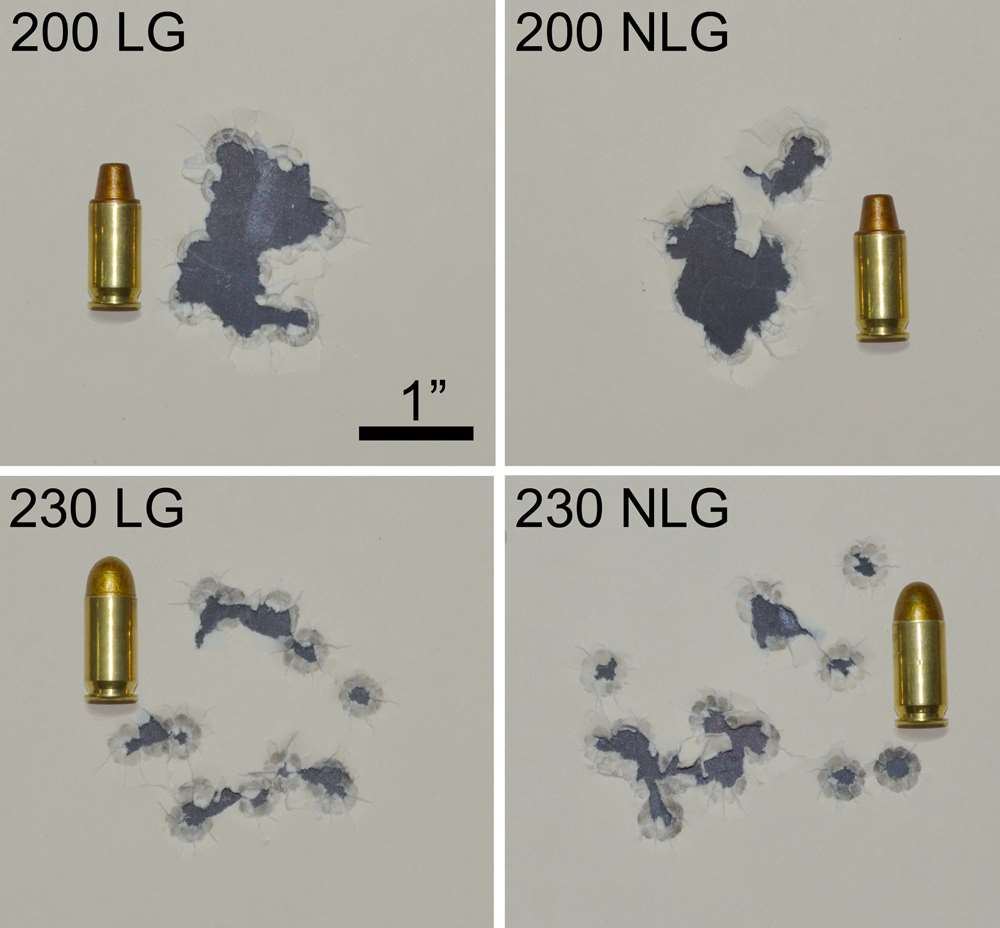
The test gun had a preference for the traditional LG 230-grain bullets, as it produced smaller groups with all three gunpowders and an average group size that was 0.8-inch smaller.
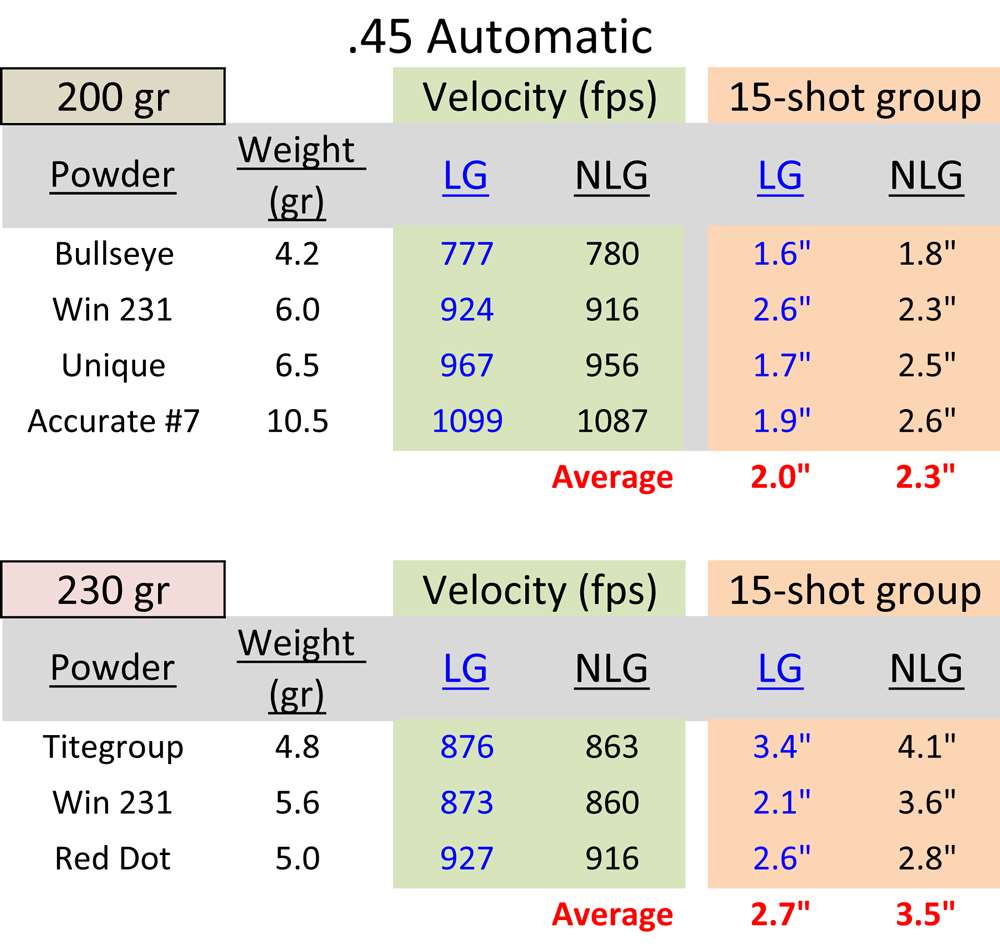
This comparison did not find that NLG cast bullets have an edge in accuracy. If they did, they should produce smaller groups in a majority of the comparisons. They did not. Instead, the NLG bullets had smaller groups in only six of the 21 (28 percent) of the comparisons.
Accuracy tests always include a caveat that the results are specific to the guns (barrels) used in the test, and that different barrels can produce different results. This is true, and it’s also true that different gunpowders will produce different results, and this data has several examples to support that statement. Whatever bullet you select, you must test it to determine if your gun likes that bullet and powder combination.
That said, this comparison test should not be considered definitive. Only a single charge weight was tested with each gunpowder. Many experienced handloaders know that you have to conduct many tests with different charge weights to find out what the bullet prefers.
Another consideration is that a relatively small number of gunpowders were tested. There are dozens of powders that can be used in any one of these calibers, but testing them all is not practical.
The one conclusion that can be made is that NLG bullets do not automatically guarantee improved accuracy over the old LG design. It might be true for some bullets and some gunpowders, but certainly not all of them. While the NLG bullets might have more surface area in contact with the bore, this alone is not enough to improve accuracy.
While we all want a quick and easy recipe for the best accuracy, we seldom get that. We’re stuck with the same old routine of trying different loads to see what works best in our gun.
DISCLAIMER: The author is not responsible for mishaps of any kind, which might occur from the use of this data in developing your handloads. It is the user’s responsibility to follow safe handloading guidelines to develop safe ammunition. You use this data at your own risk. No responsibility for the use or safety in use of this data is assumed or implied.














